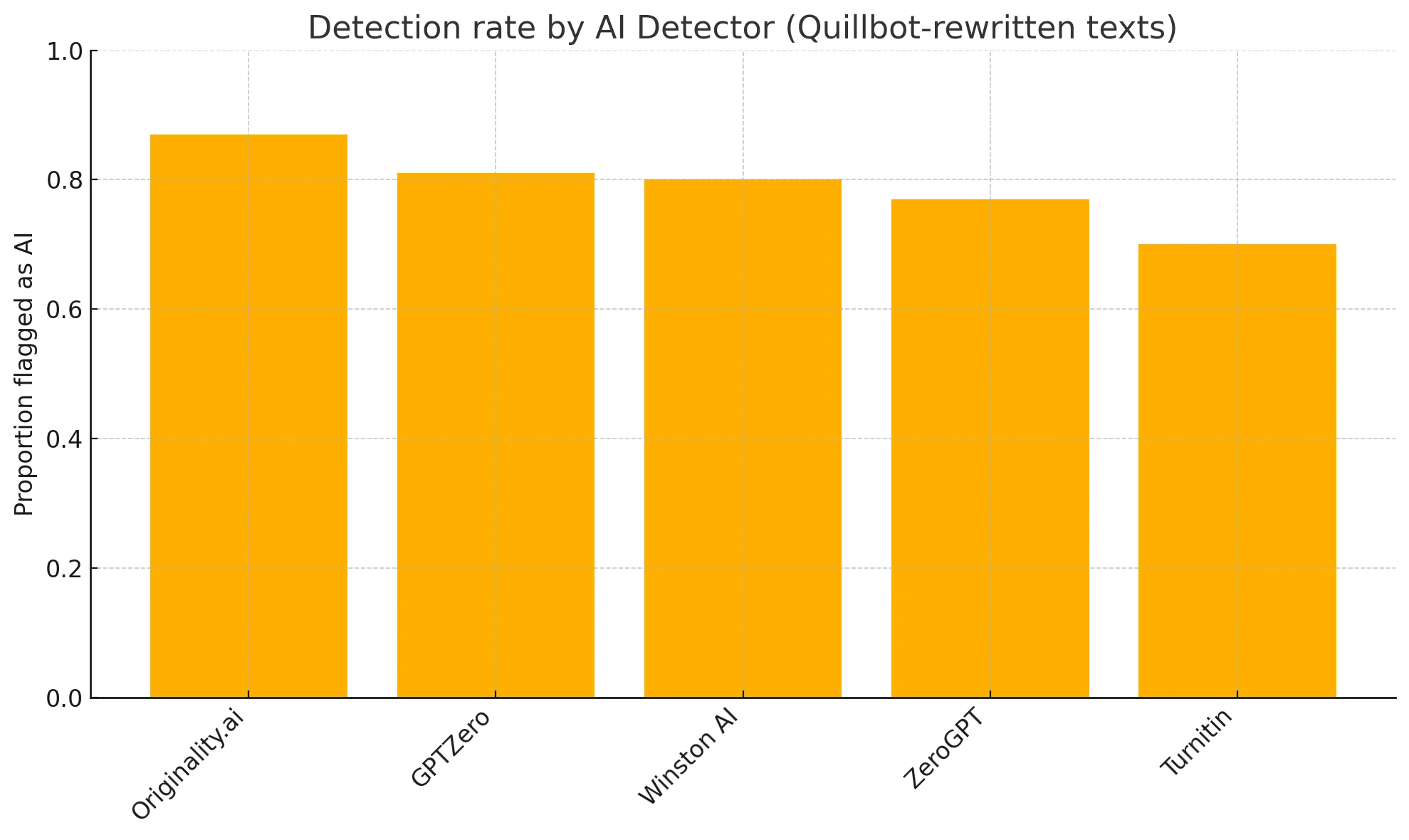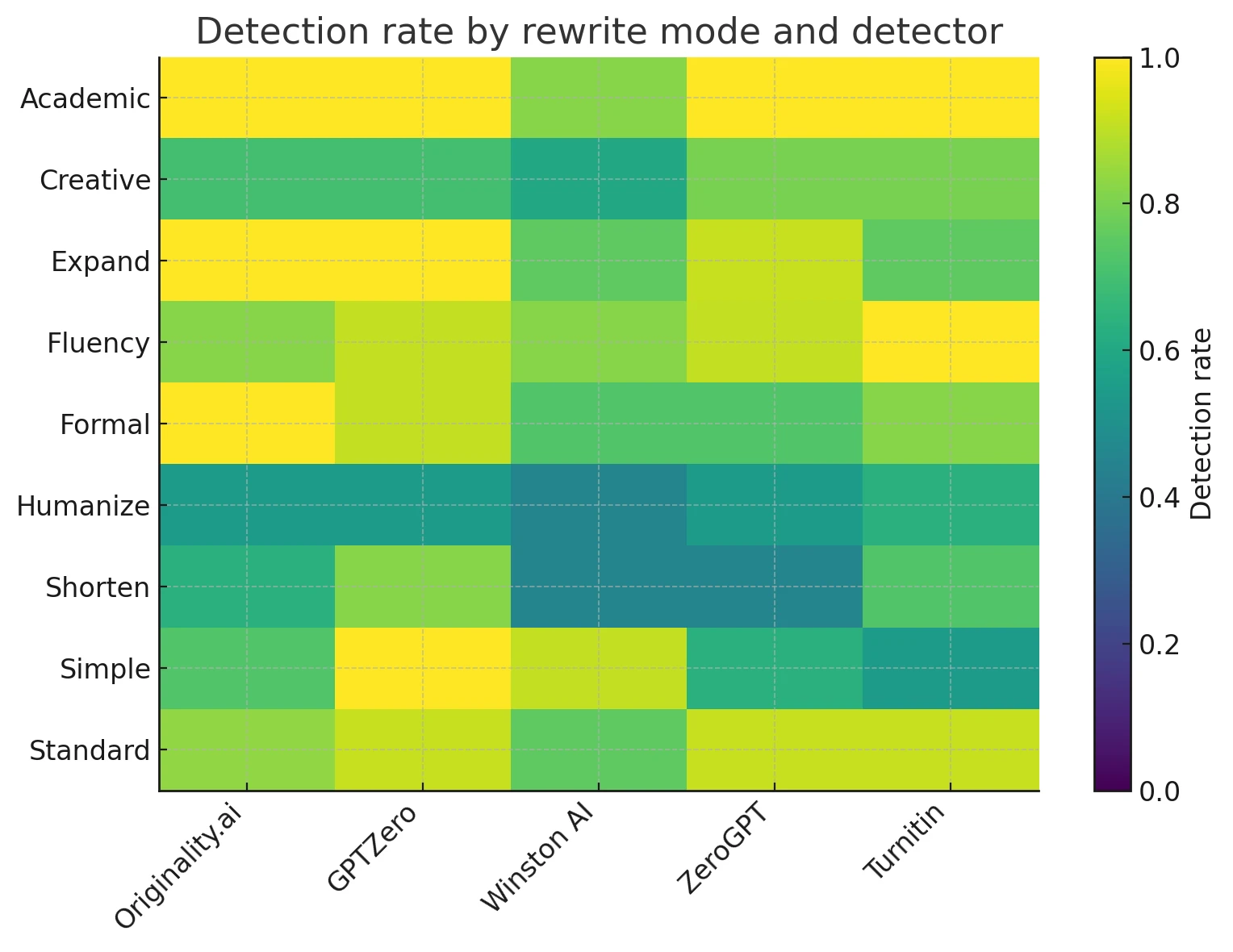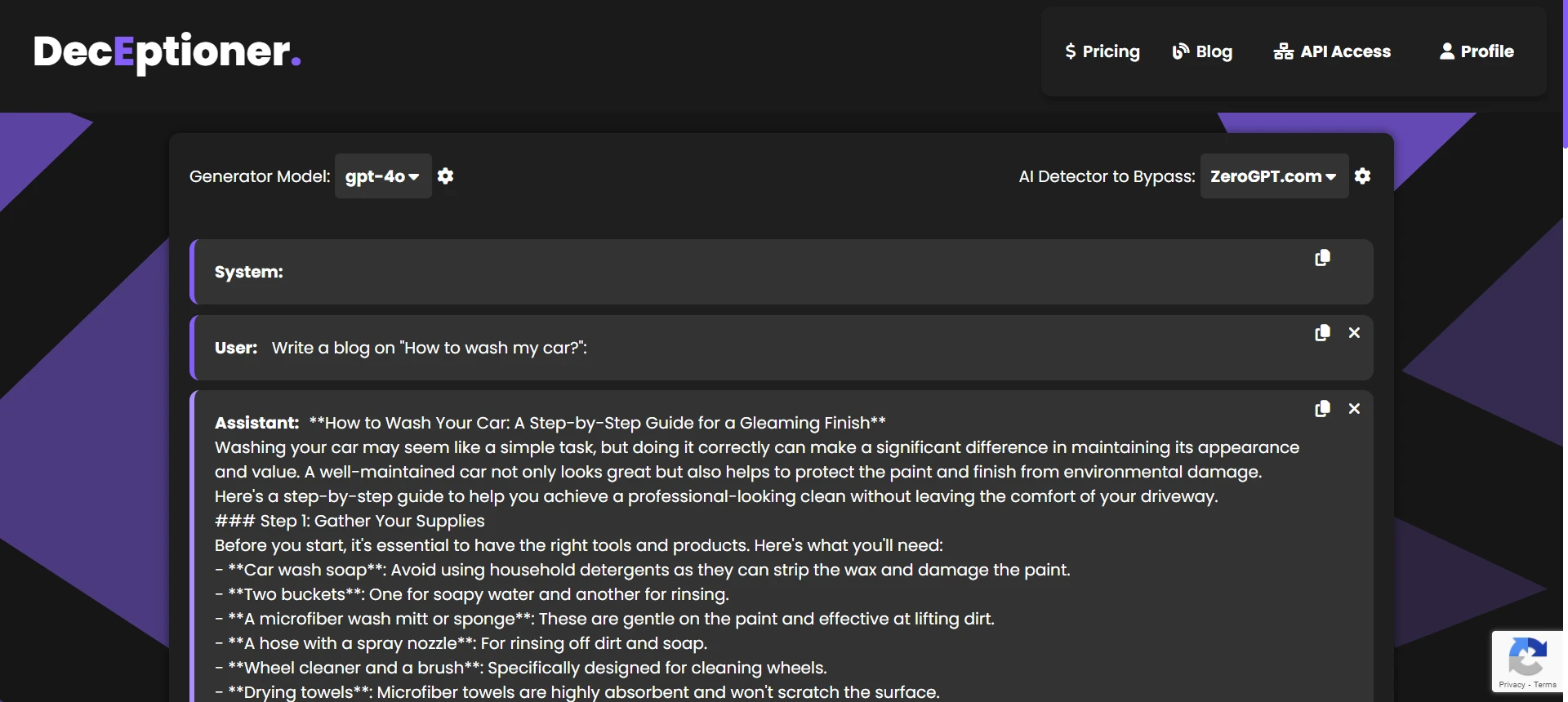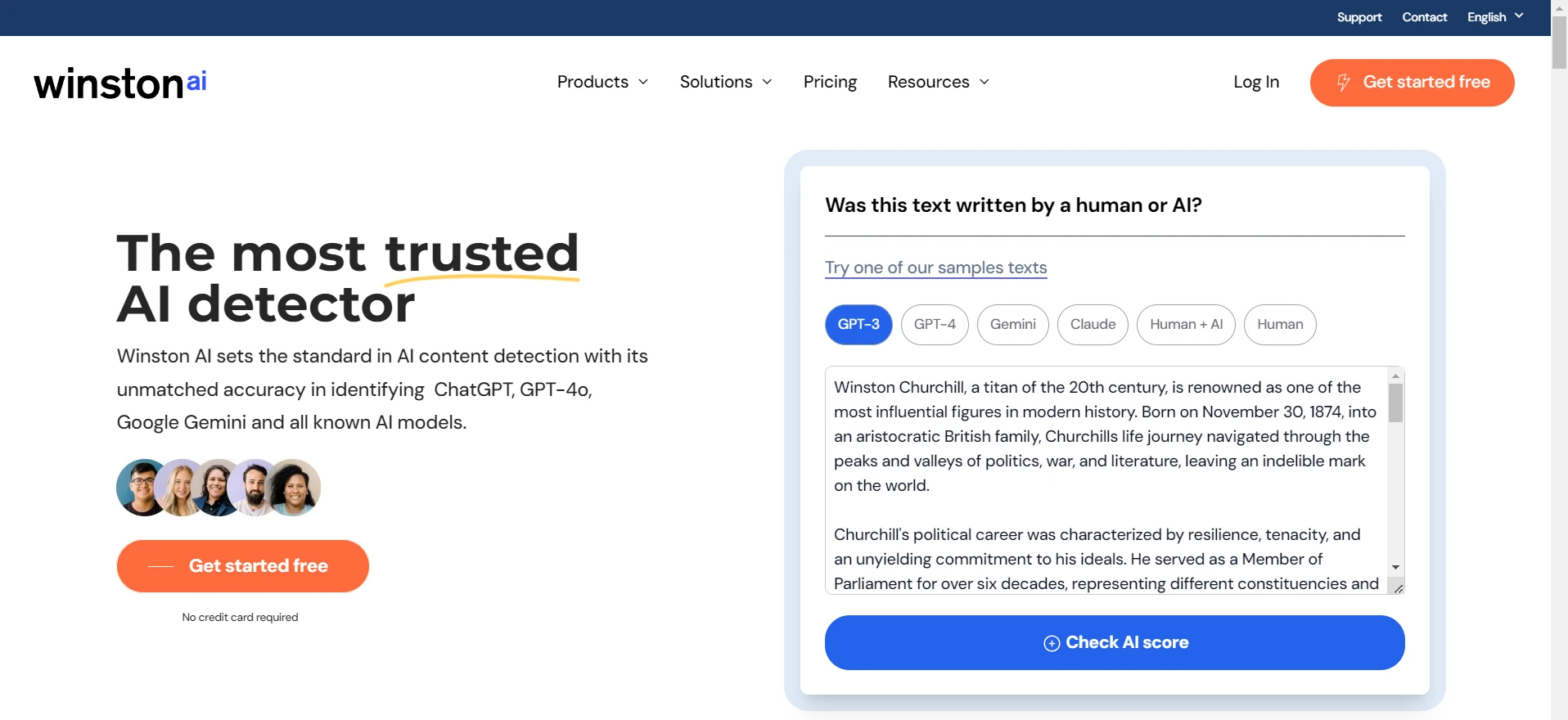As we all know it Quillbot gets pretty easily detected by Turnitin. However, is it the same for other AI detectors like Originality.ai or GPTZero? The short answer is YES — all five detectors in our test data caught most Quillbot‑rewritten passages. The longer answer is: the devil lies in the details. Keep reading to know more about it.
What the numbers say?
Based on a test set of 100 texts, the detection rates ranged from 70% (Turnitin) to 87% (Originality.ai). They all have overlapping 95% confidence intervals though, so you can’t really say for sure that one is absolutely better than the others. However, all detection frequencies were well above chance.
Here is the summary in an HTML table:
| Detector | Detection Rate | 95% CI Low | 95% CI High | n |
|---|---|---|---|---|
| Originality.ai | 87.00% | 80.00% | 94.00% | 100 |
| GPTZero | 81.00% | 73.00% | 89.00% | 100 |
| Winston AI | 80.00% | 72.00% | 88.00% | 100 |
| ZeroGPT | 77.00% | 69.00% | 85.00% | 100 |
| Turnitin | 70.00% | 61.00% | 79.00% | 100 |
Visual take-aways

We plotted a simple bar chart and the results make it evident that all these detectors are much closer to 1 (which indicates they always flag content) rather than 0. We also saw the presence of strongly bimodal score distributions in box-plots/histograms. A large chunk of passages appear highly AI‑like to the detectors, but a smaller tail ends up looking more “human” to them.
Also Read: Can ZeroGPT detect Quillbot?

From the mode heat‑map, we saw that Quillbot’s “Humanize” and “Shorten” modes do help a bit, but they can’t push any of the above detectors below ~50% detection. On the other hand, if you pick “Academic”, “Expand” or “Formal” paraphrasing, detection soared to 90–100%. So it is not rocket science to see how it gets flagged.
Why Quillbot still shows up?
Quillbot mostly relies on superficial edits. So detectors which use deeper statistical signals (like fluctuations in sentence-length, perplexity, log-probability spikes, and more) easily catch it. Another thing is that Quillbot’s rewriting style is quite consistent - it normalises the sentence structure and uniformizes everything. This is another big red flag that these AI detectors can easily identify. Finally, many of these detectors might have been directly trained on paraphrased AI text, picking up Quillbot’s accent, so to speak.
Practical implications
- For students or writers: If you want to pass AI detection, well paraphrasing alone is not a safe cloak. You need to thoroughly expand on facts, integrate your personal insights, and do heavy revision.
- For educators or journalists: Combine multiple detectors (or use an ensemble approach) to get ~90% coverage. You can simply flag anything that ≥2 tools agree upon, which will help strike a good precision-recall balance.
- For Quillbot & similar tools: If they want to truly bypass AI detection in the future, they’ll have to do more than synonyms. They will need deeper content changes, style reordering, actual expansions of ideas, etc.
Limitations & next steps
One crucial limitation is that we tested only one model’s AI text, so results might differ substantially for text generated from GPT-4 or other advanced LLMs. Also, we used a fixed threshold of 50 to classify something as “AI” vs. “human.” Tuning each detector individually could shift these results a bit. Finally, this was a sample size of 100 passages; it’s decent but not huge, so more data would yield more definitive insights.
One single opinion that is useful
While Quillbot is great for grammar fixes and simpler rewriting tasks, it is not a reliable way to bypass AI detectors. If your main objective is to hide AI involvement, you might need to do manual paraphrasing or resort to tools that specifically brand themselves as AI text humanizers. However, strictly from an academic integrity standpoint, the best path is always to produce your own original ideas and writing style.
Bottom Line
Yes, Quillbot is easily detected by AI detectors like Turnitin, GPTZero, Originality.ai, Winston AI, ZeroGPT, etc. Because Quillbot’s paraphrasing is never advertised as a cloak to pass AI detection, you shouldn’t expect it to slip under the detectors’ radar. If your main aim is bypassing AI detection, you need to either rely on dedicated tools specifically made for that job, or rewrite your own text with significant personal insights, style changes, and expansions.


![[STUDY] Can Phrasly AI Humanizer Bypass ZeroGPT?](/static/images/can-phrasly-ai-humanizer-bypass-zerogptpng.webp)
![[STUDY] Can Phrasly AI Bypass Turnitin?](/static/images/can-phrasly-ai-bypass-turnitinpng.webp)
![[HOT TAKE] Is Winston AI or GPTZero more accurate?](/static/images/is-winston-ai-or-gptzero-more-accuratepng.webp)
![[NO NONSENSE ANSWER] Is Turndetect Permanently Down?](/static/images/is-turndetect-downpng.webp)





